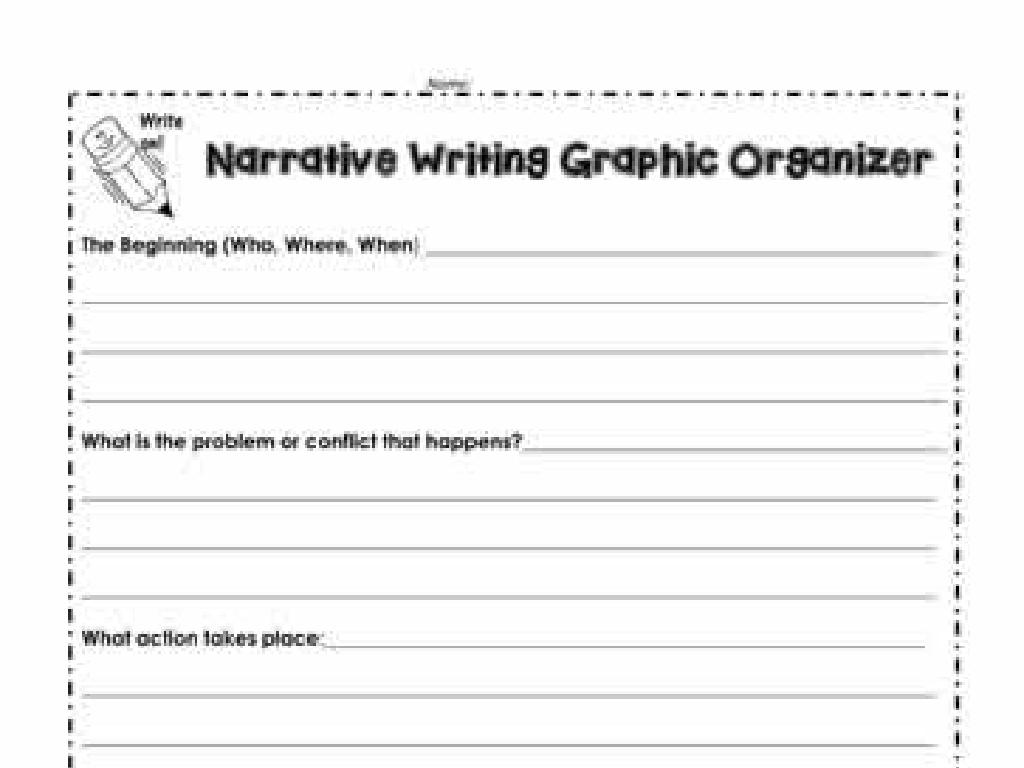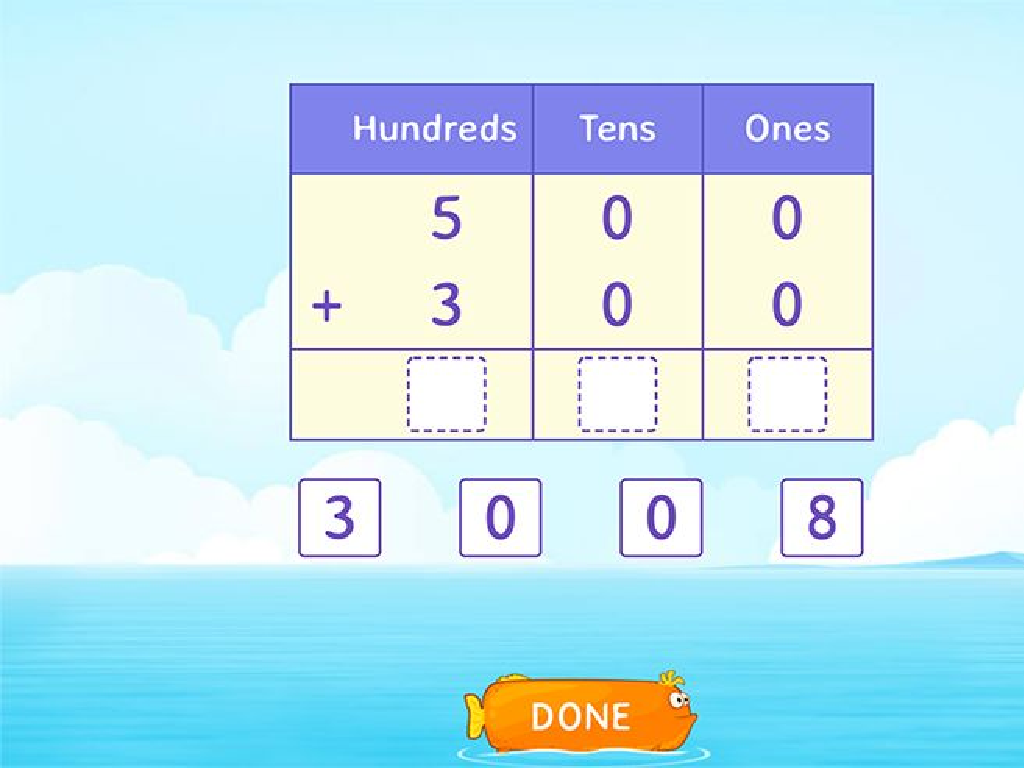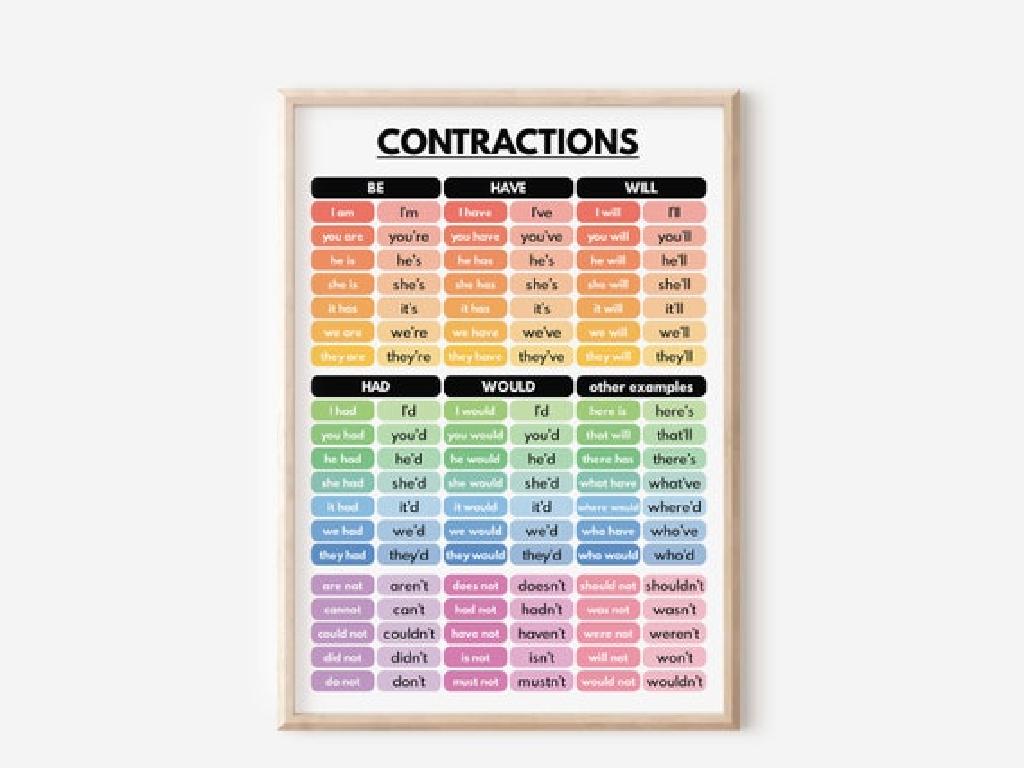Least Common Multiple Of Three Or Four Numbers
Subject: Math
Grade: Sixth grade
Topic: Number Theory
Please LOG IN to download the presentation. Access is available to registered users only.
View More Content
Exploring LCM in Number Theory
– What is the Least Common Multiple?
– The smallest number that is a multiple of two or more numbers.
– LCM’s role in math and daily life
– Used to solve problems in areas like adding fractions or scheduling events.
– Quick multiples refresher
– Multiples are what we get when we multiply a number by integers (e.g., Multiples of 3: 3, 6, 9, 12…).
– Strategies to find LCM
– Use prime factorization or listing out multiples to find the LCM.
|
This slide introduces the concept of the Least Common Multiple (LCM) and its significance in both mathematical theory and practical applications. Begin by defining LCM and then discuss how it is used in real-world scenarios, such as finding common denominators for adding fractions or planning events with different recurring schedules. Refresh students’ memory on what multiples are with examples. Finally, present strategies for finding the LCM, such as prime factorization or the listing method, and prepare to delve deeper into each method in subsequent slides. Encourage students to think of LCM as a tool that helps streamline and solve problems efficiently.
Understanding Multiples
– Define a multiple
– A multiple of a number is the product of that number and an integer.
– Multiples for numbers 1-10
– For example, multiples of 3 are 3, 6, 9, 12, 15…
– Recognize patterns in multiples
– Patterns: Multiples of 2 end in 2, 4, 6, 8, or 0.
– Practice finding multiples
– Use multiplication to list out the first few multiples.
|
Begin by defining what a multiple is and ensure students understand the concept as the foundation for learning about least common multiples. Provide clear examples for multiples of numbers 1 through 10 to illustrate the concept. Highlight and discuss the patterns found in multiples, such as even numbers for multiples of 2, or ending in 5 or 0 for multiples of 5. Engage students with practice exercises where they list out multiples for given numbers to reinforce their understanding. This will prepare them for finding the least common multiple in subsequent lessons.
Understanding Least Common Multiple (LCM)
– Define Least Common Multiple
– The smallest number that is a multiple of two or more numbers.
– Importance of LCM in problem-solving
– Helps find common denominators, synchronize events.
– LCM in real-life scenarios
– Scheduling, organizing events with different time cycles.
– Practice finding LCM
|
The concept of Least Common Multiple (LCM) is a fundamental aspect of number theory and is particularly useful in solving a variety of mathematical problems. LCM is the smallest number that is a multiple of two or more numbers, which is essential when working with fractions to find a common denominator. It’s also used in real-life situations such as determining the timing for traffic lights, scheduling events, or planning recurring activities that happen at different intervals. Encourage students to think of LCM as a tool for finding a common ground where different cycles or sequences can align. Provide examples and exercises to practice finding the LCM of three or four numbers to solidify their understanding.
Finding the Least Common Multiple (LCM)
– Learn the listing method for LCM
– List multiples of each number until you find the smallest common one.
– Example: LCM of 4 and 5
– List multiples of 4 (4, 8, 12, 16, 20) and 5 (5, 10, 15, 20). LCM is 20.
– Engage in a practice problem
– Find the LCM of 6 and 9 together as a class.
– Class participation encouraged
|
This slide introduces the concept of finding the least common multiple (LCM) using the listing method. Start by explaining that the LCM is the smallest number that is a multiple of both numbers. Demonstrate with an example, finding the LCM of 4 and 5 by listing their multiples. Then, involve the class in an interactive practice problem to find the LCM of 6 and 9, guiding them through the process. Encourage students to participate and discuss their findings. This activity will help solidify their understanding of LCM and how to find it using the listing method.
Finding the LCM of Three Numbers
– Step-by-step LCM guide
– List multiples, find smallest common
– Example: LCM of 3, 4, 5
– Smallest number divisible by 3, 4, 5 is 60
– Class activity: Find LCM
– Use the guide to calculate LCM of 6, 8, 9
– Discuss LCM results
– Share answers, verify with the class
|
This slide introduces the concept of finding the least common multiple (LCM) of three numbers, which is essential in understanding number theory and preparing for fraction addition and subtraction. Start with a clear step-by-step guide on how to list out multiples and identify the smallest number that all three original numbers divide into evenly. Provide an example with numbers 3, 4, and 5, showing that their LCM is 60. For the class activity, have students apply the method to find the LCM of 6, 8, and 9, encouraging collaboration. After the activity, discuss the results as a class to ensure understanding and correct any misconceptions. The activity should be engaging and interactive, with the teacher facilitating and providing guidance as needed.
Finding the LCM of Four Numbers
– Extend LCM method to four numbers
– Use the same steps as with three numbers, but include one more
– Example: LCM of 2, 3, 4, 5
– Step-by-step: Prime factorization and choose the highest powers
– Group activity: Find LCM of 4, 6, 8, 10
– Collaborate to apply the LCM method and solve
|
This slide introduces the concept of finding the least common multiple (LCM) when dealing with four numbers. Start by explaining that the process is an extension of finding the LCM for three numbers, with an additional step to include the fourth number. Use the example of 2, 3, 4, and 5 to demonstrate the process, breaking it down into prime factorization and selecting the highest powers of these factors. For the group activity, students will work together to find the LCM of 4, 6, 8, and 10, which encourages collaborative learning and application of the concept. Provide detailed guidelines for the teacher to facilitate the activity, suggesting different strategies students might use and how to guide them towards the correct solution.
LCM in Fraction Operations
– LCM simplifies fraction addition
– Least Common Multiple (LCM) finds a common denominator for fractions
– Example: Add 1/4 and 1/6 with LCM
– LCM of 4 and 6 is 12. So, 1/4 becomes 3/12 and 1/6 becomes 2/12. Then, 3/12 + 2/12 = 5/12
– Practice: Add 1/3 and 1/5
– Find LCM of 3 and 5 to add fractions
|
Understanding how to use the Least Common Multiple (LCM) is crucial when adding or subtracting fractions with different denominators. It allows students to find a common denominator, which simplifies the process of combining the fractions. Start with an example, showing how to add 1/4 and 1/6 by first finding the LCM of 4 and 6, which is 12. Then, convert each fraction to an equivalent fraction with the denominator of 12, and proceed to add them. For the practice problem, guide students to find the LCM of 3 and 5, and use it to add 1/3 and 1/5. This exercise will reinforce their understanding of LCM and its application in fraction addition.
LCM Games and Puzzles
– Play LCM Bingo
– Solve LCM puzzles
– Work together in teams
– Collaborate to find LCMs
– Develop problem-solving skills
– Use LCM knowledge to tackle challenges
|
This slide introduces engaging classroom activities focused on finding the Least Common Multiple (LCM) of numbers. The LCM Bingo game is an interactive way for students to practice identifying LCMs in a fun, game-like setting. Each student or team will have a bingo card with different numbers, and as the teacher calls out LCM problems, students will mark off the answers if they appear on their cards. The LCM puzzle challenge involves various puzzles that require finding the LCM to complete. Encourage teamwork by having students work in small groups, fostering a collaborative environment where they can discuss and solve LCM problems together. This not only helps them understand the concept of LCM but also enhances their problem-solving and critical thinking skills. Prepare several sets of bingo cards and puzzles beforehand, and consider creating different difficulty levels to cater to all students. Remember to walk around the classroom to assist and encourage groups as they work through the activities.
Class Activity: LCM Scavenger Hunt
– Search for numbered items
– Work in groups for LCM
– Find the LCM of item numbers
– Share and discuss findings
– Each group explains their LCM discovery
– Explore different methods
– Discuss various strategies used
|
This interactive activity is designed to help students apply their understanding of least common multiples (LCM) in a fun and engaging way. Students will move around the classroom to find items that have numbers on them, such as page numbers, clock numbers, or any other numbered objects. In groups, they will calculate the LCM of those numbers, fostering collaboration and problem-solving skills. Afterward, they will share their findings with the class, providing an opportunity to discuss the different methods used to find the LCM. This will help students see the practical application of LCM and learn from each other. As a teacher, be prepared to guide them through different methods like prime factorization or the listing multiples method, and ensure that each group understands the concept. Have a few example items ready to demonstrate the activity.
Conclusion: Mastering LCM
– Recap LCM finding methods
– Review listing multiples and prime factorization
– LCM’s applications in fields
– Used in scheduling, computing, and more
– Real-life LCM scenarios
– Apply LCM to time tables or events planning
– Homework assignment
|
As we wrap up, let’s revisit the methods to find the Least Common Multiple (LCM) – listing out multiples and using prime factorization. Emphasize how understanding LCM is not just a math exercise; it’s used in real-world applications such as event planning, computer science, and engineering to solve complex problems. For homework, students should find the LCM of numbers they encounter in daily life, such as the number of days before two friends with different weekly routines meet again. This will help them see the practical use of LCM and reinforce their learning. Encourage creativity and real-world connections in their homework.






